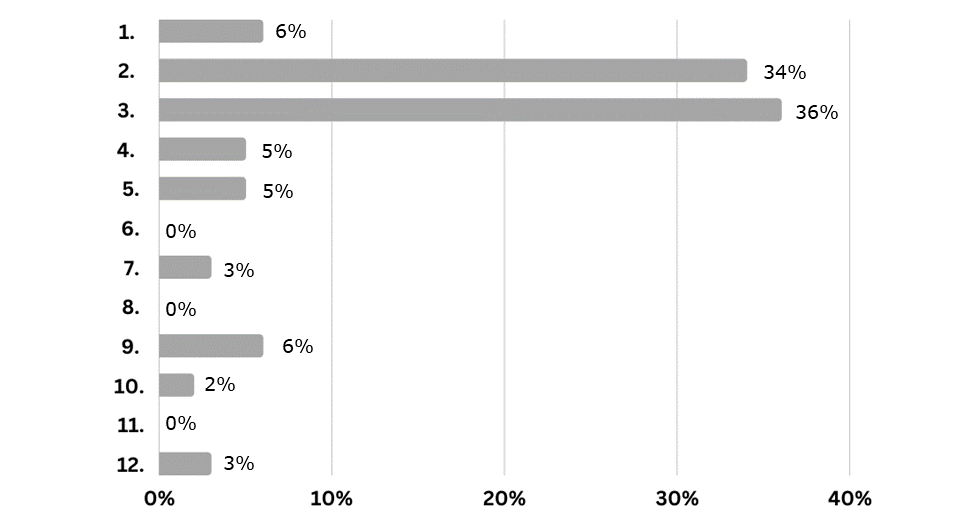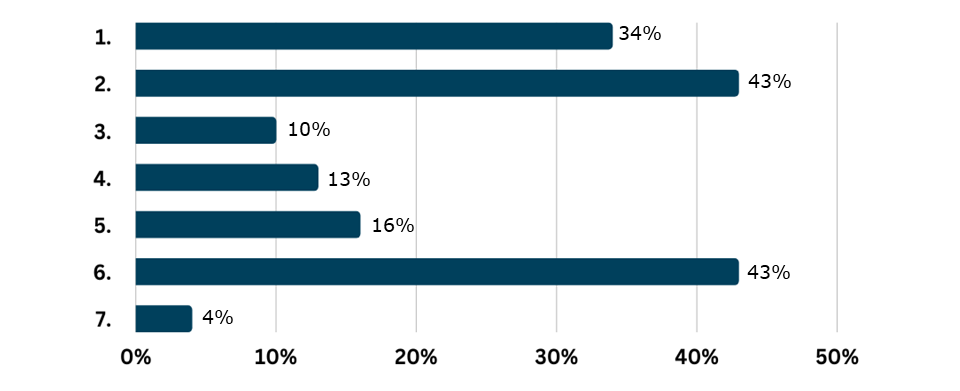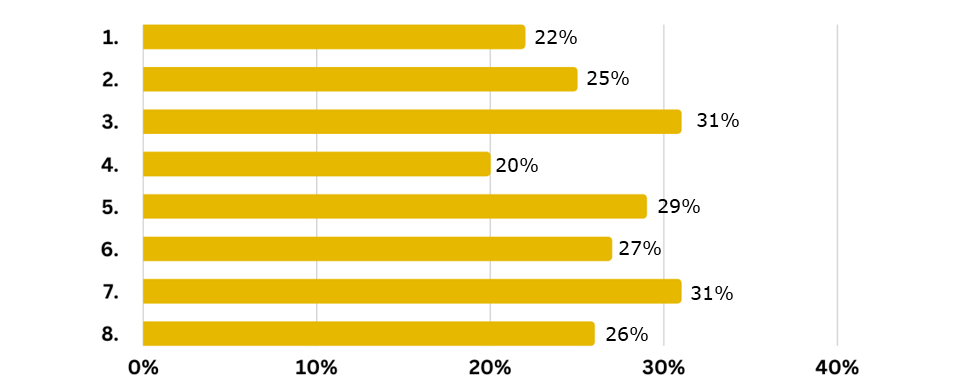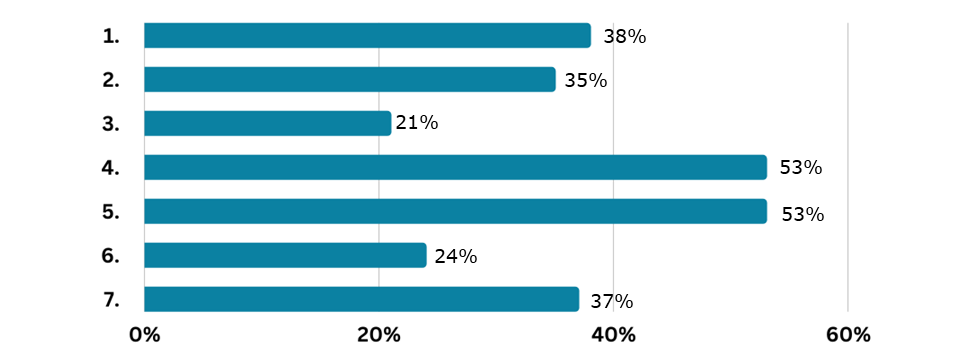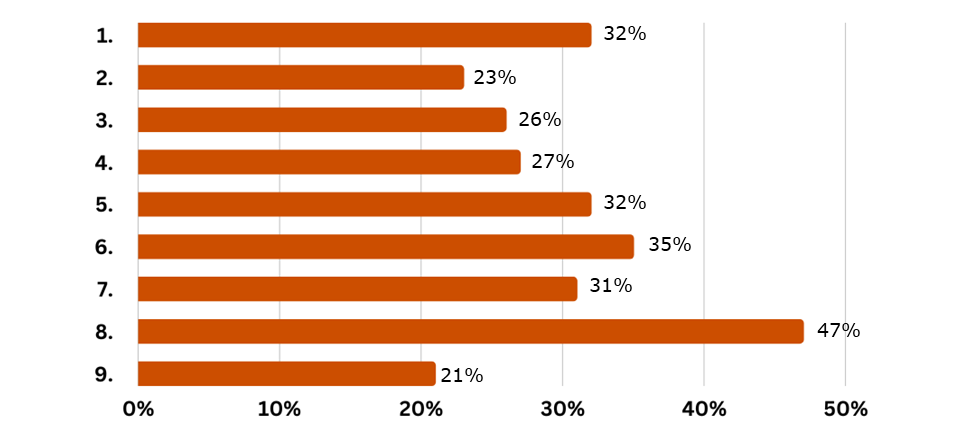Survey on supporting gifted and talented pupils in becoming high achievers - Results

The term ‘gifted and talented’ may be widely used, but definitions vary. Broadly speaking, gifted children have the potential to develop significantly ahead of their peers in one or more academic subjects, while talented young people have practical skills in areas such as sport, music and the performing arts.
In the context of inclusive education-as reflected in the European Commission’s Pathways to School Success initiative-the main goal is to achieve educational success for all learners. Some of those learners are gifted and talented, but may not achieve their potential owing to psychological factors (e.g. being on the autistic spectrum, having ADHD) or contextual factors (e.g. the pace of lessons, the curriculum, or school culture).
Without support, these pupils may become disengaged or feel unchallenged, which can hinder their academic growth and overall development. With adequate resources and support, including a challenging curriculum and specialised instruction, these pupils can develop their talents and abilities, reach their full potential, and make significant contributions to their communities and society.
The survey on gifted education gathered 391 responses, most of which came from Italy, Greece and Türkiye.
Which of the following best describes your role?
- Teacher – early childhood education and care
- Teacher – primary education
- Teacher – secondary education
- Teacher – vocational education
- School head
- National, regional, or local authority
- Teacher educator
- Education policymaker
- Parent
- In-school support staff (e.g., school librarian, career counsellor)
- External practitioner (visiting schools)
- Other educational professional/stakeholder
1 - In your school (or a school you know), gifted and talented pupils are…
For 43 % of respondents, identifying gifted and talented pupils is based on teachers' subjective assessments, while 34 % reported that formal tests are used. Almost half (43 %) indicated that gifted and talented pupils are treated the same as other pupils, as opposed to being recognised as a distinct category of pupils (10 %) or with special educational needs (16 %). Specific educational provision is relatively uncommon in respondents' schools (13 %).
- Identified through formal assessment (e.g., psychological, aptitude or IQ tests)
- Identified by teachers’ subjective assessments
- Recognised as a distinct category of pupils
- Given specific educational provision
- Treated as having special educational needs
- Treated the same as other pupils
- I don’t know
2 - Have you received professional development to help gifted and talented pupils achieve their potential?
Most respondents (56 %) have received some form of professional development focused on supporting gifted and talented pupils. It was more common (31 %) in continuous professional development than initial teacher education (8 %), although 17 % benefited from both types of professional development. A significant proportion of respondents (39 %) have not received any training in this area.
- During initial teacher education
- As continuous professional development
- Both of the above
- None of the above
- Not applicable (I’m not a teacher or school staff)
3 - Regarding teaching gifted and talented pupils, my school (or a school I know)…
Concerning the approaches taken by schools to support gifted and talented pupils, a notable percentage of respondents (31 %) agreed that their school encourages teachers to identify and support gifted pupils, considering the unique characteristics, interests and profiles of their pupils when designing learning activities (31 %). Furthermore, 29 % of respondents stated that their school recognises that success is more than mere academic results, employing diverse assessment methods for a more holistic approach (27 %). However, only 25 % reported that their schools offer personalised opportunities for gifted pupils, and approximately 22 % mentioned addressing multiple forms of pupils' intelligence. Lastly, it is worth noting that as much as 26 % of respondents said that none of the above-mentioned approaches are currently implemented in their school.
- Covers multiple forms of pupils' intelligence (interpersonal, verbal, kinaesthetic, etc.)
- Provides personalised opportunities (additional lessons, one-to-one mentoring, etc.)
- Considers the availability, interests, and profiles of pupils when designing and implementing learning activities
- Allows pupils to choose in- and out-of-class tasks
- Recognises that success can be measured in different ways, beyond just academic results
- Uses a variety of assessment approaches, beyond just traditional testing (performance-based assessments, projects, etc.)
- Encourages teachers to identify and support gifted and talented pupils
- None of the above
4 - In your opinion, the most effective elements of differentiated pedagogy are:
Access to diversified teaching/learning materials and promoting the acquisition of independent learning skills are regarded as the most effective elements of differentiated pedagogy, with each receiving 53 % of respondents' support. 38 % recognise the importance of examining individual differences among pupils, and 37 % highlight the significance of continuous and repeated assessments to adapt teaching to pupils’ needs. The value of consulting pupils about their interests and motivations to shape the learning experience is also recognised by 35 % of respondents. However, the results show that aspects such as peer collaboration and focusing on essential skills and understanding are less widely acknowledged (24 % and 21 % respectively).
- Differences between pupils are examined and constitute the starting point of the pedagogical project
- Pupils are consulted to base teaching on their interests and motivations
- Teaching/learning is focused on the acquisition of essential skills, to value and understand the concepts and relevant knowledge
- Access to diversified teaching/learning materials
- Promoting the acquisition of independent learning skills
- Pupils help their classmates and the teacher to solve problems
- Assessment is continuous and repeated to adapt teaching to pupils’ needs
5 - In your opinion, the main challenges are:
The main challenge, cited by 47 % of respondents, is striking a balance between catering to the advanced requirements of gifted pupils while ensuring others progress and engage. Additionally, 35 % of respondents reported a lack of time available to adequately address the specific needs of each pupil, followed by 32 % who mentioned the lack of essential resources to develop specialised teaching. Furthermore, addressing the social and emotional well-being of these pupils (26 %) and identifying those who may be overlooked due to cultural or socio-economic factors (23 %) emerge as challenges for a smaller percentage of respondents. Finally, 21 % of the respondents acknowledged that it's challenging to support gifted and talented pupils with learning differences or disabilities.
- Lack of an appropriately challenging curriculum that meets the needs of pupils while also ensuring they remain engaged and motivated
- Identifying pupils who may not fit into traditional categories, or who may be overlooked due to cultural or socio-economic factors
- Addressing their social and emotional needs (e.g., feeling isolated or misunderstood)
- Lack of teachers’ professional development opportunities in this area
- Lack of resources for teachers to develop specialised instruction, mentorship programmes, and extracurricular activities
- Lack of time to address pupils’ specific needs
- Lack of expertise or knowledge to support pupils
- Balancing the needs of gifted and talented pupils with the needs of others in the classroom
- Supporting gifted and talented pupils with learning differences or disabilities that impact their academic performance
Conclusion
The survey results show that a significant percentage of respondents recognise the unique needs of gifted and talented pupils, typically based on their subjective assessments rather than formal ones. However, there remains a lack of distinct educational provision for them, because striking a balance between meeting the advanced needs of gifted pupils while ensuring the progress of others is considered a challenge.
In terms of school approaches, while some encourage teachers to identify and support gifted pupils based on their individual characteristics and interests, others rarely offer personalised opportunities and address multiple forms of intelligence, most frequently owing to time and resource constraints.
Finally, although a majority of respondents have received some form of professional development to support gifted and talented pupils, there is still a lack of training in this area, which an upcoming course in the European School Education Platform may help to address.
Additional information
-
Education type:School Education
-
Target audience:Head Teacher / PrincipalParent / GuardianSchool PsychologistStudent TeacherTeacherTeacher Educator
-
Target audience ISCED:Primary education (ISCED 1)Lower secondary education (ISCED 2)Upper secondary education (ISCED 3)

